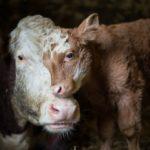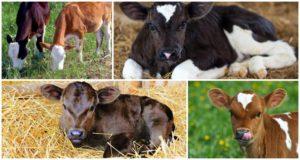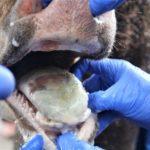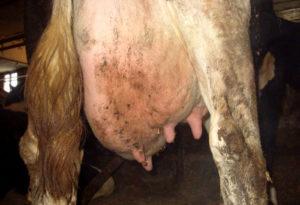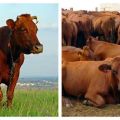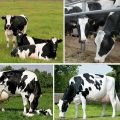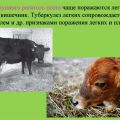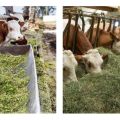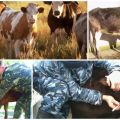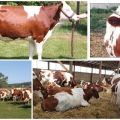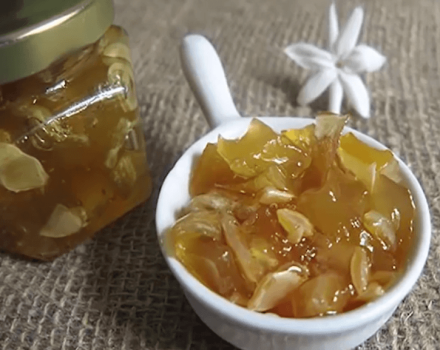The causative agent and symptoms of foot and mouth disease in cattle, treatment of cows and possible danger
FMD is very dangerous for cattle. Indeed, young animals die from this viral disease, and adult animals are hard to tolerate the disease and even after recovery they can infect healthy cows and bulls. The disease affects the productivity of cattle. Milk production decreases, animals slowly gain weight, meat quality deteriorates. Cows and bulls sick with foot and mouth disease are often sent to slaughter to prevent infection of the entire herd.
What is this disease
Foot and mouth disease is a dangerous viral disease that affects domestic animals, most often young calves, cows and bulls. Differs in severe course and dangerous consequences leading to the death of cattle. Sick animals from disadvantaged areas (Asian countries) are the source of infection. Vaccination of cattle against a specific type of foot and mouth disease (7 types are known) helps prevent the disease.
In sick cattle, the temperature rises, saliva is constantly flowing, and on the mucous membranes of the mouth and nose, the skin of the udder and in the interdigital fissure, vesicular and ulcerative rashes are noticeable. Patients with foot and mouth disease cannot swallow, refuse to feed, quickly lose weight. The animal's digestive organs are affected. Because of the ulcers on the udder, cows cannot be milked, they develop mastitis. The virus infects the soft tissues of the hooves, they begin to fester. The disease can lead to scar necrosis, bronchopneumonia and gangrene of the lungs, disturbances in the work of the heart and myocardium.
The disease lasts 1-2 weeks, the incubation period is 2-6, maximum 20 days. In case of complications, the cow dies on 2-6 days. In the recovered, but surviving animals, productivity indicators (milk yield, weight gain) decrease. Foot and mouth disease usually leads to the death of young animals (mortality - 80-100%) and adult cattle (mortality - 40-90%). As a result, the number of herds decreases, including due to the forced slaughter of livestock.

Animals that have recovered from one type of foot and mouth disease can subsequently fall ill with another type of this viral disease. They try to prevent the disease with the help of vaccination.
Pathogen, source and routes of spread
The causative agent of a disease such as foot and mouth disease is an RNA-containing virus from the family of the smallest picornaviruses. The rhinovirus itself consists of 32 capsomeres, which form a rhombic tricontahedron. It was possible to establish 7 different types of foot and mouth disease virus. The causative agent of the disease is resistant to various weather conditions, but dies when heated to more than 60 degrees Celsius, as well as under the influence of ultraviolet radiation and disinfectants.
The source of the disease is the animals that are sick with foot and mouth disease, which are in the incubation period and who have recovered from this viral disease. From the body of sick individuals, the virus is excreted with saliva, blood, urine, and also with feces. The causative agent persists for a long time in the fur of animals, soil (in the fallen off crusts of ulcers), as well as in milk and meat. The virus is transmitted through contaminated feed, bedding, manure, equipment, and insect bites.
You can become infected with foot and mouth disease through direct contact (through lesions on the skin and through the mouth, nose, eyes) with a sick animal and by inhaling the air containing viral particles. When the virus enters the bloodstream, the whole body becomes intoxicated. As a rule, FMD is not transmitted from person to person. People who breed cattle become infected with the virus through contact with sick animals.
Signs and symptoms of the disease
At the very beginning, cows and bulls that have caught the virus develop a burning sensation in the mouth, swelling, and redness. Because of this, profuse drooling and conjunctivitis begins. After a few days, rashes appear on the mucous membranes of the oral cavity, tongue, gums, as well as on the nose - blisters filled at first with a transparent and then cloudy liquid. Aphthae can occur on the udder of the female and on the skin of the interdigital cleft.
After a few days, the bubbles merge, then burst, and red ulcers form in their place.
The virus, having penetrated into the lymph and blood, spreads to all organs and tissues. In animals, the digestive system suffers, it is difficult for them to swallow, they refuse feed and quickly lose weight. Gastroenteritis and purulent abscesses develop. The body temperature rises. Udder ulcers cause pain in cows, which makes them reluctant to milk, the disease leads to mastitis.

If limbs are affected, erosion of the hooves and lameness are possible. In severe cases of foot and mouth disease leads to scar necrosis, bronchopneumonia, gangrene of the lungs. Animals with good immunity recover after 7 days, sometimes the disease lasts 3-4 weeks and also leads to the recovery of cattle. In severe cases (with complications), cows die in 2-6 days. After recovery, animals lag behind in growth, give birth to dead calves, often pregnancy ends in spontaneous abortion.
Diagnosis of pathology
Such a dangerous disease as foot and mouth disease is diagnosed on the basis of examination, clinical presentation and laboratory tests. The virus is isolated from blood, saliva, aft and feces. When conducting laboratory tests, the type of viral foot and mouth disease must be determined. This helps to choose the right vaccine for the vaccination of healthy cattle. Virus identification takes about one week.
When making a diagnosis, it is important to exclude the presence of other diseases with similar symptoms (viral stomatitis, plague, smallpox).
How to treat foot and mouth disease in cattle
There are no medicines for foot and mouth disease. Veterinarians usually prescribe medication to treat the symptoms of this viral disease. Sick animals are isolated from the main herd. For 2 months they are kept in quarantine and treated with antiviral drugs, convalescent serum. If necessary (purulent infection), antibiotics are prescribed ("Bicillin").

The oral cavity, the affected skin areas are treated with disinfectants and wound healing agents (a weak solution of potassium permanganate, "Chlorhexidine", oxolinic, interferon ointment). Animals are given light food, plenty of drink, if necessary, fed through a tube. Vitamin and mineral complexes are prescribed. The healing of ulcers is accelerated by ultraviolet irradiation, preparations "Panthenol", "Levovinisol", "Vinisol".
Potential danger
Foot and mouth disease is dangerous in its consequences. Even apparently healthy animals that have suffered a mild viral disease can infect cattle with weaker immunity. Young animals die in 8-9 cases out of 10, mortality in adult cows is two times lower. Females who have suffered foot and mouth disease often give birth to dead calves, and their pregnancy ends in spontaneous abortion. Recovered bulls do not gain weight well, their meat is unsuitable for food.
For this reason, all animals affected by foot and mouth disease are sent to slaughter. Healthy cows and bulls are vaccinated against foot and mouth disease. Vaccination has no effect on the carriers of the virus (recovered and recovered cows and bulls).
Vaccinations against disease
To prevent and prevent infection with foot and mouth disease, healthy animals are vaccinated against this dangerous viral disease. For immunization of cattle, there are a number of mono and associated (against several types) vaccines. You can buy the medication at any veterinary pharmacy. Animals are vaccinated against the type of foot and mouth disease that is found in a particular area.
Vaccinates adult cows and bulls, as well as calves between 6 weeks and 6 months of age. In disadvantaged regions, vaccination is carried out annually. Pregnant and lactating cows are not vaccinated. Vaccination, as a rule, is carried out before mating animals or in the spring, before pasture cattle.
The vaccine is not a cure, it does not cure foot and mouth disease, but allows cows and bulls to get sick with the virus in a mild form and acquire resistance to this viral disease. The vaccination is done intramuscularly or subcutaneously. The dosage of the drug is prescribed depending on the age and weight of the cattle.
The vaccine is completely harmless to cows and bulls, but the main thing is that only absolutely healthy and not weakened animals are allowed to be vaccinated. Contact your local veterinarian to find out the vaccination schedule and the type of vaccine required.

Other prevention measures
Foot and mouth disease is one of the most dangerous diseases. Usually this viral disease is brought from unfavorable regions to favorable ones. To prevent infection of local animals in each area, a number of preventive measures are taken. Sanitary and veterinary services inspect the condition of cattle, and also monitor the movement, purchase of breeding bulls and cows from other countries, especially Asian ones.
The risk of infection arises in the case of illegal import of animals. It is recommended to register all livestock of cattle. Owners of cows and bulls can protect themselves from the virus by vaccinating their animals in time. Vaccinations are performed by local veterinarians. It is advisable to graze cattle on pastures where wild animals do not run, as well as buy feed in regions favorable for foot and mouth disease.
Dairy and meat products sold in the markets are also subject to control. At home, you can protect yourself from FMD infection from animals in a simple way. The main thing is to boil the milk bought at the bazaar, and heat the meat. If there are known cases of an outbreak of foot and mouth disease in a specific area, it is not recommended to buy cream and sour cream at the bazaar. If redness, swelling, and rashes appear in the mouth, you should immediately consult an infectious disease doctor.

